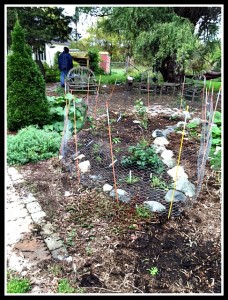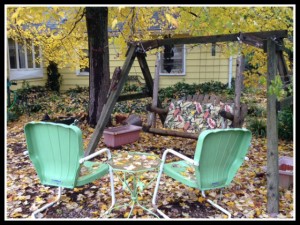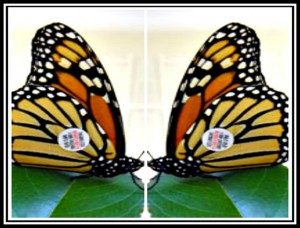Planting a Native Plant Garden
Jo Ellen Roe
October 7, 2015

My new native garden looks a bit bare at present, but it includes 19 bee-and-butterfly-pleasing plants.
Today, I helped create my first totally native plant garden. I and the person who helps me in the garden planted 17 new natives to accompany the two that were already there. (This same bed formerly held overgrown day lilies that I had grown thoroughly tired of. Therefore, the crescent-shaped bed itself was already made.)
In its new iteration, the bed is in its infancy and is therefore not beautiful. But I am confident that it will be in a year or two.
Design Considerations
As we designed the garden, we aimed to complement the two existing plants, a button bush and a thimble weed, both planted last year, both doing well. We put the tallest plants — wild monarda, or bee balm (3), and penstemon (2) — in the middle. Around the edges, we planted Virginia Mountain mint (3), prairie dropseed grass (3), nodding wild onion (2), coreopsis (2), and golden alexander (1). At the end of the garden, where it extends out further, we planted an aster. We purchased all these plants (plus a few more) last weekend at the annual Native Plant Sale at Matthaei Botanical Gardens. We bought the original two there at last year’s sale. ... Read More



